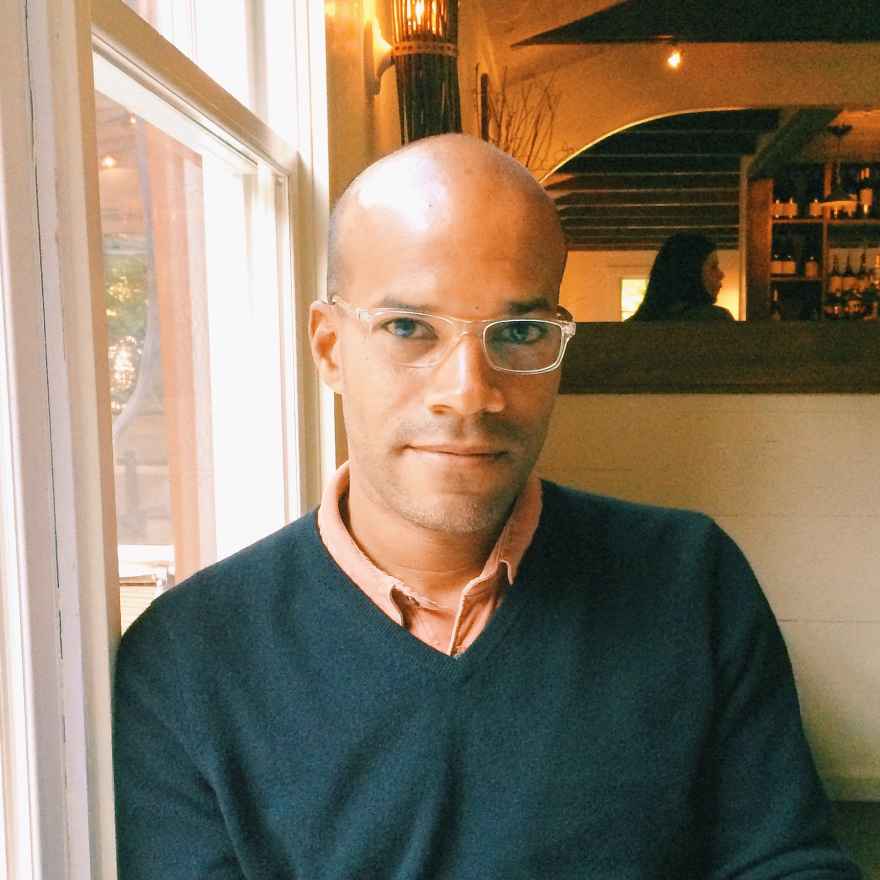Acclaimed Art Historian Serves as the Exhibition Scholar for the US Pavilion at the 2019 Venice Art Biennale

Darby English’s scholarship defies easy categorization, combining teaching, researching, and writing about art, artists, culture, and history, as well as curating. He studies artists and their media without assigning them the tidy labels that would unjustifiably pigeonhole them.
“Darby stands out for his acuity and understanding the complexity of art beyond the label of an artist’s ethnicity or race,” said William Pope.L, associate professor in the Department of Visual Arts at UChicago and renowned artist. “Darby is singular in realizing art is just art. He gets right into the detail of my practice of art, discussing sound, rhetoric, and language, and the formal issues of material, shape, and volume.”
English’s unusual and varied talents secured him the position of Exhibition Scholar for the US Pavilion exhibition by American sculptor Martin Puryear at the 2019 Venice Art Biennale, May 11–November 24. As he prepared for this role, English discovered fresh opportunities to see how nations and artists approach questions of representation.
“This is an especially good time to exercise a curiosity about artistic representation, since something that Bill Connolly called ‘aspirational fascism’ has become a legitimately global phenomenon,” said English, the Carl Darling Buck Professor in the Department of Art History and adjunct curator in the Department of Painting and Sculpture at the Museum of Modern Art in New York City.
This year’s Venice Art Biennale displays 79 international artists under the theme “May You Live in Interesting Times” for its exhibitions in 35 national pavilions, with 19 collateral events and one special project. Its aim is to reveal previously unconsidered ways of being in the world and change its visitors’ view of that world, becoming a guide for how to live and think in interesting times.
As Exhibition Scholar, English shifted his customary focus on modernism to delve into forms of European neoclassicism and Enlightenment. “These preparations affected quite a bit of my current research program, by which I mean the work I do out of my own problems and questions,” he said. “Whereas last summer I initiated a new project—about the widening failure of our difference words—in a very 20th-century oriented way, my research itinerary is entirely different now. And so is the writing that’s trickling out.”
For most of his career, English has focused on examining works and issues of 20th- and 21st-century art in his books such as 1971 A Year in the Life of Color (2016) and To Describe a Life (2019). His art history colleague at UChicago, Christine Mehring, finds English has developed a groundbreaking repertoire of methods for locating various political, social, and cultural meanings in artistic forms, materials, and, especially, in color.
“Darby develops compelling arguments about abstract art and what it means, while seeing the broader philosophical implications and pushing the big and hard questions,” said Mehring, professor and chair in the Department of Art History. “He’s been a leader at UChicago in expanding how we teach and think about the arts in substantive ways, setting the bar higher than anyone else.”
During his tenure at UChicago, English has found the latitude to go where his subjects take him. On the teaching side, he has discovered students with a “voracious appetite and subtle feeling for questions.” Additionally, English has the flexibility to pursue work with the Museum of Modern Art.
“His ability to serve as a tenured professor and curator is unusual in the broader worlds of academia and museum, but increasingly less unusual at UChicago given the example he has set,” Mehring said. “Darby’s curatorial work at MoMA shapes what art is acquired and what art people see, which is very influential, today and for centuries to come.”
Lately, English has been contemplating Martin Puryear’s 40-year practice and the eight sculptures on view at the Venice Biennale. English describes Puryear as an abstract sculptor with a yen for vernacular forms. “Puryear is impressive as a modernist because he has discovered compelling problems in the history of sculpture itself but converted these discoveries into forms that can be palpably vital, pointing well beyond art,” English said.
For Puryear and other artists he studies, English likes to break down the walls between artistic media and look at artists and how they define and handle problems. “Medium is a form of law, and art that sustains my interest tends to be a little lawless,” he said. “Serious questions about art mediums do not remain medium-specific for very long. So, I don’t relate that way to artistic mediums. My writing about visual art moves across a range of art’s physical formations beyond painting and sculpture into such mediums as installation, film, video, performance, photography, drawing, and drawn writing. With that said, I have spent much of the last two years dealing with Puryear and the work of Rachel Harrison, another sculptor. This has meant a long residency with sculpture, which is arguably the most traditional and perseverant of mediums.”
English’s scholarship will continue to focus on art as art, without approaching it through concepts or categories, which, he finds, allows one to explore it at its fullest.